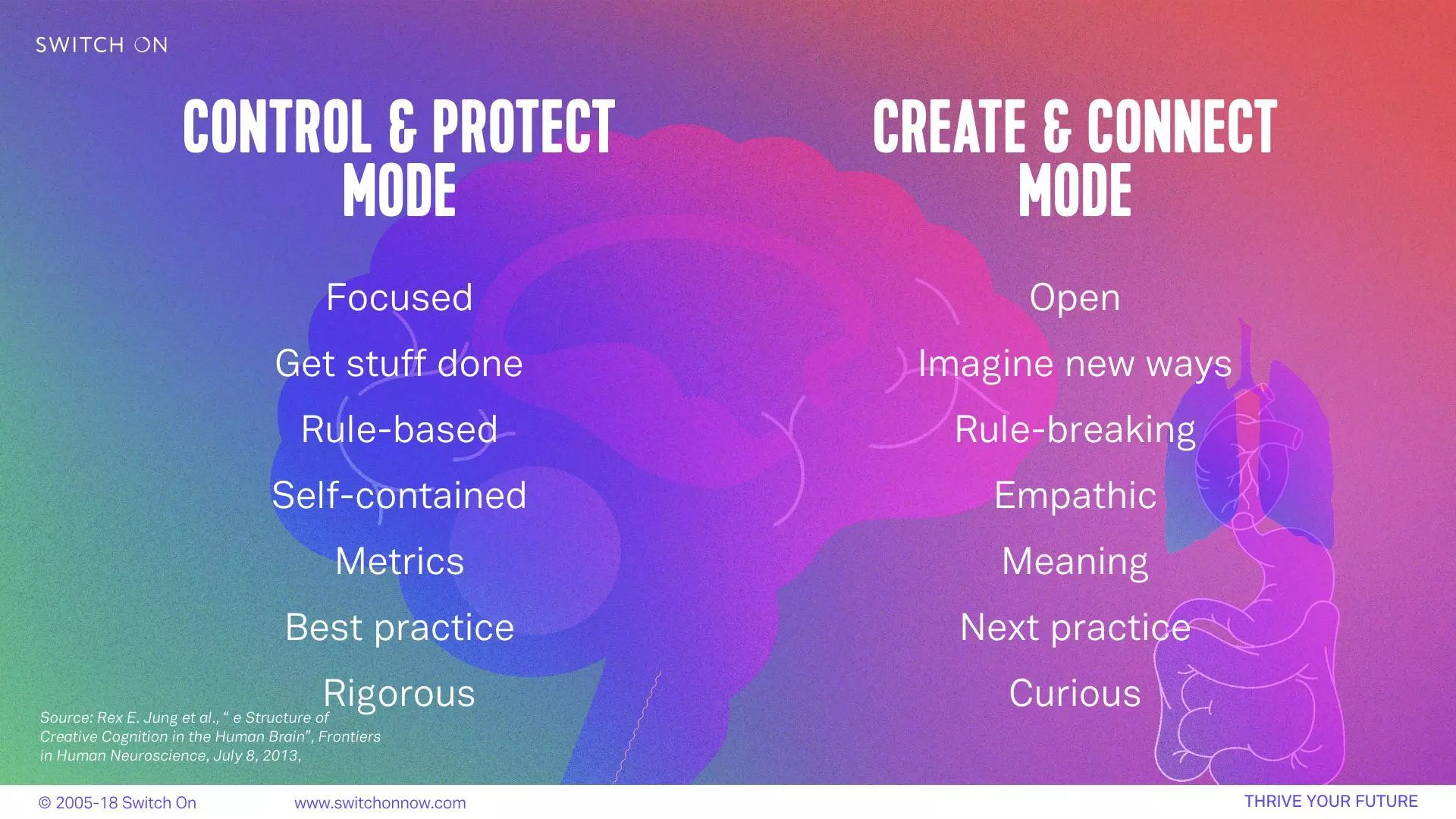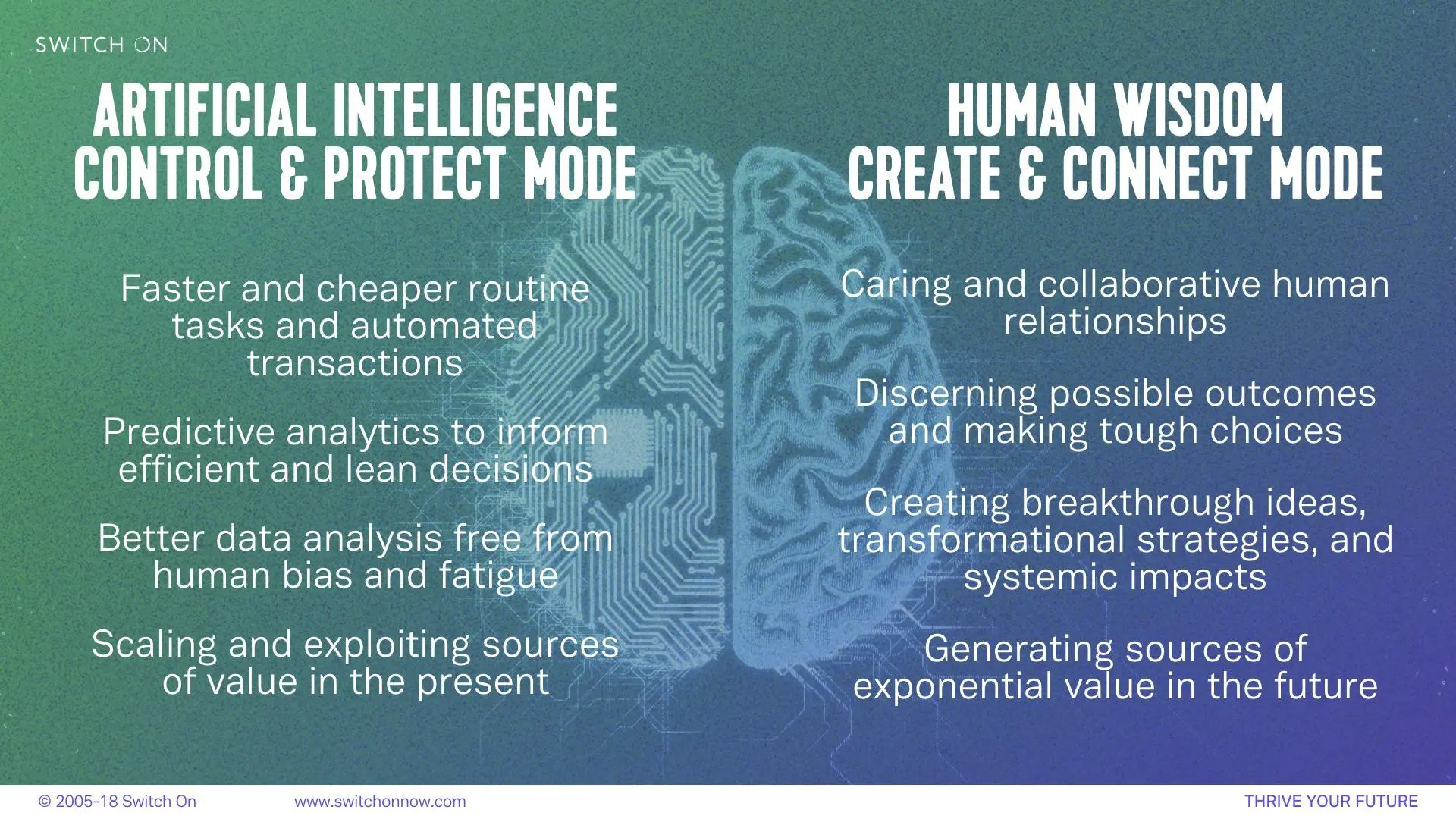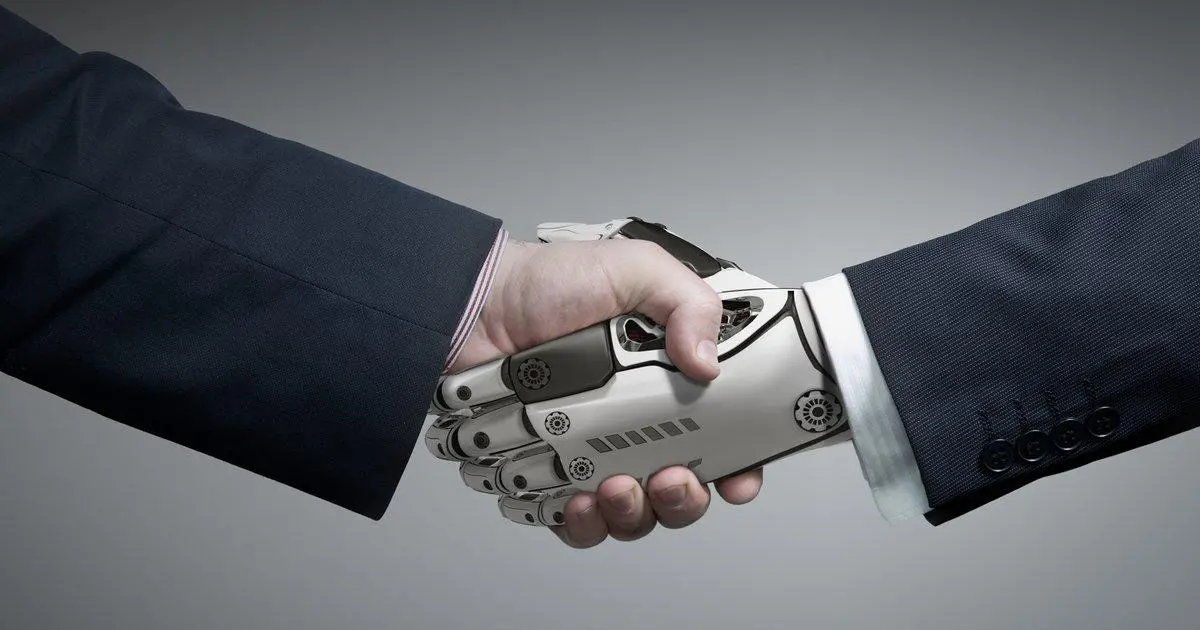Perhaps the most compelling and crucial question at the heart of our present day anxieties about the rise of Artificial Intelligence is this: will machines ever be creative, compassionate, and wise and so transcend our capabilities as leaders (whether leaders of enterprises, systems, families or simply our own lives)?
It all comes down to what we believe consciousness is; and whether we believe that we can ever codify consciousness in a causal, mechanistic, materialist – ie. scientific and algorithmic – way. If we can, then non-organic materials – silicon chips and the like – will be able to become conscious and with this momentous event, be able to not simply execute rules programed in by their coders or discovered through machine learning – but actually think and even feel as we humans do.
Everything is at stake, as I share in this video The Future Of Leadership.
If consciousness is explainable and predictable in the way the function of the heart or digestive systems are, then machines may well be able to reach and surpass our capacity to innovate, collaborate, and lead. If this is the case, we may well become truly redundant and our future as a species is bleak. If consciousness is not possible to codify and manifest will algorithms, then machines will never be able to break rules in the way we can every day when we disrupt an industry as a breakthrough innovator, change our organizational habits of a lifetime as a transformational leader, or transform our family life when we choose, consciously, not to be triggered by the way our parents or children talk to us act.
As my new book Spiritual Atheist reveals – a book about how to blend scientific and contemplative understandings of human life and leadership – William James, the grandfather of modern psychology and an arch-challenger of orthodox scientific materialism, suggested over a hundred years ago a way of understanding human consciousness that resists it being reduced to the movement of sodium ions across neuronal membranes. This has become known as the transmission or filter model. Over millennia, Buddhist contemplative “science” has come up with a similar theory of human consciousness. Such a framework might help us comprehend how we have intuitions, insights, and ideas that seem to come from beyond the everyday: like the breakthrough idea we have in the shower or the winning concept(s) that somehow emerges from a team of committed people.
In such a framework, the brain is elemental to consciousness, and shapes it, but does not produce it mechanistically. Consciousness pervades the entire world, including the brain. It is one of the two aspects of the non-dual reality that is everywhere. The brain then ‘renders’ consciousness into the experiences and thoughts we have in any given moment. In this view, we cannot have human-style conscious awareness without a brain; but the brain is not sufficient for consciousness. Much like a radio does not create the program you are listening to but turns radio waves into coherent sound using electronics within, the brain may access non-local information from connective consciousness and turn it into our experiences.
Creative experiences of flow, vision, insight, and intuition are what occurs when the brain changes how it filters the enormity of infinite reality. Aldous Huxley, an ardent materialist before he took psychedelics to explore his own consciousness, also proposed such a filter model, using the analogy of a “reducing valve”. When we meditate, move ecstatically, or take a shamanic medicine plant, the “doors of perception” are opened, the valve stops reducing so much data, and we see the world as it truly is: infinite (and intense.) It is fitting then that recent studies at Imperial College, in which scientists have scanned the brains of people taking LSD and psilocybin, corroborate such a model: the unconstrained mental experience associated with psychedelics is linked to less activity in parts of the brain that might filter or limit the full experience of everything rushing into our sensory field. The entropic state that follows leads to a less definitive order or pattern being imposed on the billions of bits and bytes of data coming into our brain. We get the whole kahuna burger of reality with #nofilter.
Drawing on cutting-edge science like this, as well as a deep reading of various wisdom traditions, I think it likely that the brain accesses local information from our memories, as materialists propose, as well as “non-local” information from beyond our neural wiring. It then integrates the two streams of data together into our consciousness. The relative mix between the two sources of information determines what kinds of thoughts we can have – like a DJ mixing between tunes A and B on the decks – and how we lead ourselves and others in the moment. This model aligns with the key differences between brain networks and digital networks: brain networks seem to manifest consciousness from the bottom-upworkings of classical (and potentially quantum) biological material… whereas in digital networks the bits of information stored are encoded from the top down. As Sean Webb has stated in a great blog post, “[w]e don’t yet have computers which write bits from below the level of the bit itself, we therefore hit the limitation of information resolution.” In other words, I don’t think consciousness will ever “boot-up” on non-organic circuitry, no matter how complex and Google-ified it is.
In my book, as well as in all our leadership programs, I outline the two Modes of consciousness I believe human beings are in during the vast majority of their waking hours. Control & Protect Mode is a state of consciousness in which we are focused, often without being fully aware of it, on defending ourselves against threats and dealing with uncertainty to maximize our chances of survival. In this state we rely on efficient, but not always effective, solutions, habits, and thoughts that have worked in the past. These can often include variations of the fight, flight, or freeze response. We are good at creating and using best-practice to get jobs done to time and to budget. We can solve technical problems with rules and algorithms that have worked in the past. This Mode is great for dealing with recognizable challenges that we have encountered in the past. But it sucks for engaging with new problems like how to: reduce poverty for 9 billion people, avoid populist extremism, solve climate change, ensure our businesses operate with fully digitalized business model, help our enterprises attract the best Millenial talent, and deal with the trials and tribulations of parenting teenagers in the 21st Century child.
On the other hand, we all have access to what I call Create & Connect Mode. This is a state of consciousness in which we are focused on growing, learning, loving, leading, and thriving by connecting with ourselves, each other, and the universe. In this state we can access imaginative thoughts, ideas, insights, and intuitions to create effective, if not always efficient, solutions to new and emerging challenges. We can bring breakthrough ideas into the world and land transformations in people, products, and processes. If we rely heavily on Control & Protect Mode, we are limited to existing patterns, rules, and habits encoded into our neurons. In Create & Connect Mode we are opened up to connective consciousness and thus to genuinely fresh ideas, empathic insights, and moral intuitions.
The two Modes of leadership and organizational behavior summarized:

This “dual-aspect” understanding of human consciousness is why I don’t believe AI will ever be genuinely creative (you can find a debate I was part of on this topic on the BBC World Service). Many technologists are certain that machine learning will be able to replicate human thought. I believe we will get to a genuine form of artificial intelligence which will be able to give us a run for our money when it comes to the calculating, linear thinking of Control & Protect Mode. I believe AI will out-pace us with analytical tasks, eventually even those that are challenging and non-routine. I think AI will help us overcome unhelpful human biases like the confirmation bias that plagues science, politics, and business. I think AI will help us become ever-smart free from biological fatigue and other limits of the human condition.
But I don’t believe that computers will be able to engage in the non-linear, imaginative, and empathic consciousness of Create & Connect Mode. Therefore there will never be Artificial Wisdom: creative, compassionate, conscious. Machines will do algorithmic, rule-based learning better than we can; but they won’t do rule-breaking creativity nor discern what tough choices to make as leaders that balance the need to make profit whilst also delivery purpose.
Then we can harness the analytical genius of Artificial Intelligence with world-changing genius of Human Wisdom like this:

N.B. More food for further thought: Each Mode of consciousness shifts how we see the world and how we believe things work within it. So in Control & Protect Mode, which dominates everyday Western mindsets, the universe appears to be made up of separate things in neat linear cause-and-affect relationships. This Mode develops a “mechanistic” view of things – the universe / human brain / body as mechanisms – which appears utterly obvious and unassailable truth.
However, anecdotal evidence and cutting-edge psy research shows that in Create & Connect Mode, we experience the world to be much more interconnected and relational. All things – no matter how apparently disparate and discrete they appear in rational awareness – appear to be part of complex systems with hard-to-discern feedback loops. We develop a “systemic” or “holistic” view of things where we are part of the great web of existence and things are more than the sum of their parts.
It is fascinating that the Western education system, brought to a zenith in the training of computer scientists and the development of code, rewards techies / scientists for mastering Control & Protect Mode. Those that succeed most in this mechanistic world are therefore the most likely to be both coding and funding machine learning: part of a self-sustaining system of AI boosters and Singularity champions who talk up the tech; and who get most airtime in the current AI debates.





Leave your comments
Post comment as a guest